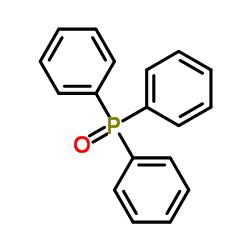| Structure | Name/CAS No. | Articles |
|---|---|---|
 |
Triphenylphosphine oxide
CAS:791-28-6 |
|
 |
Dimethyl sulfoxide
CAS:67-68-5 |
|
 |
DL-Serine
CAS:302-84-1 |
|
 |
Retinoic acid
CAS:302-79-4 |
|
 |
argon-40
CAS:1290046-39-7 |
|
 |
8-Octanoyloxypyrene-1,3,6-trisulfonic acid trisodium salt
CAS:115787-84-3 |